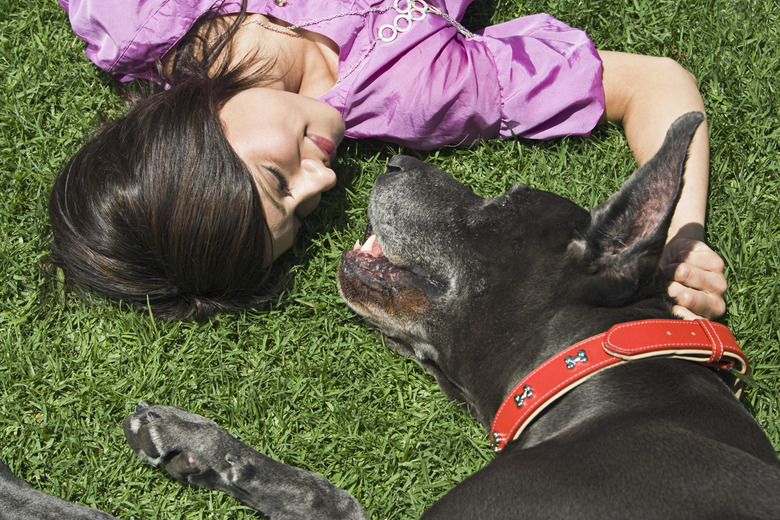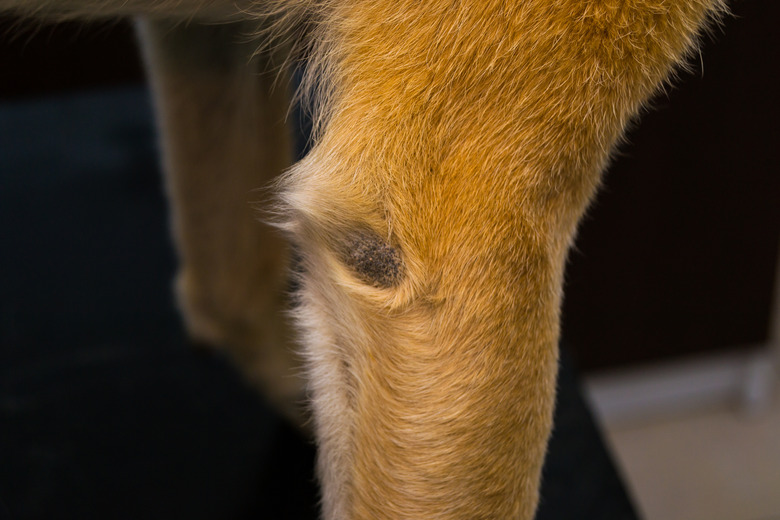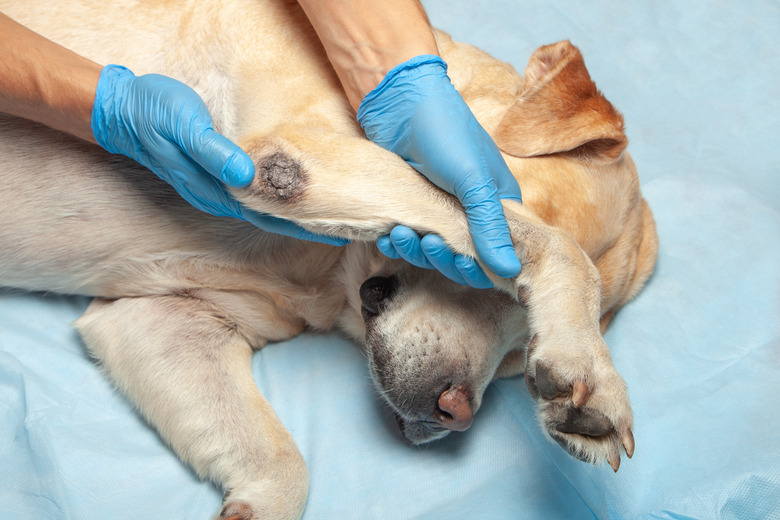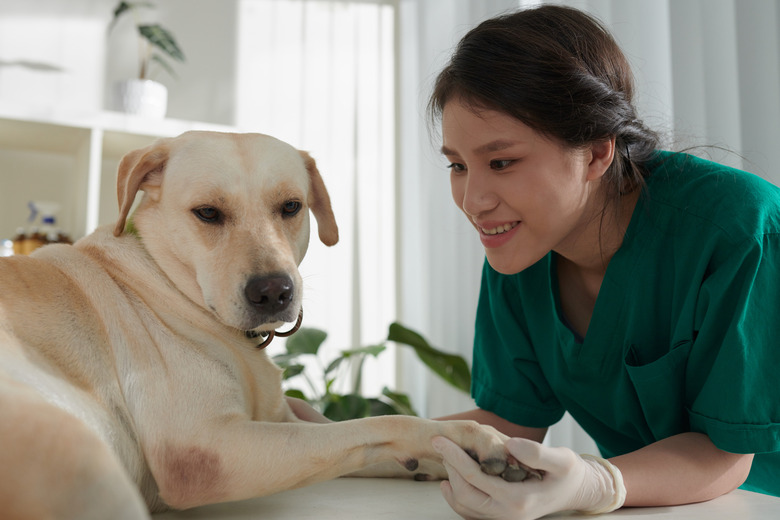Skin Disorders On A Dog's Elbow
Skin disorders on a dog's elbow run the gamut from infection to skin tags, warts, and various benign tumors. While any dog can develop a skin problem on his elbow, it's more common in large breed dogs with short hair. If you notice any skin problems on your pet, take him to the vet. Early detection and treatment can nip some disorders in the bud.
Pyoderma in dogs
Pyoderma in dogs
Pyoderma is a bacterial skin infection that often presents as a lesion or pustule, looking similar to a pimple in humans. Pyoderma can occur anywhere on a dog's skin but is common on elbows, as these pressure points are prone to irritation and infection. Pyoderma can be due to allergies, parasites, thyroid issues, and many other causes.
Symptoms of pyoderma often consist of dry or flaky skin on the elbows, hair loss, scabs, and redness or irritation. The area may be itchy and you might notice your dog scratching or licking at their elbow. Some pyoderma may ooze pus or blood and emit a foul smell.
If you suspect you may be dealing with dog elbow pyoderma, be sure to make an appointment with your vet. A vet will be able to properly diagnose the issue and recommend proper treatment, which will usually consist of a course of antibiotics but may also include topical sprays or medicated shampoo.
Calloused elbows on dogs
Calloused elbows on dogs
Calluses frequently develop on dogs' elbows due to constant pressure from lying down. They develop to protect a dog's joints and are not cause for concern in many cases. Calluses are most common in large dogs, but can develop in any dog that spends a lot of time laying on a hard surface.
Callused, dry skin on dogs' elbows will appear gray, black, or brown but can also stay pink — though the skin will be hard and thicker than normal. More severe calluses, or those that become infected, may present as ulcers or sores. If your dog's calluses change color or appearance, it's best to get them in with a vet.
Providing your dog with a comfortable bed and discouraging him from resting on hard floors or ground can prevent calluses. You can soften calluses by using vitamin E oil or other moisturizing oils that are safe for dogs.
Elbow hygromas in dogs
Elbow hygromas in dogs
In some cases, a callus may become a hygroma — a fluid-filled swelling that develops thick, fibrous tissue under the skin. Hygromas are very common on dog elbows due to constant pressure, so they are often preceded by a callus.
Larger hygromas may resemble a tumor, but they are not cancerous. They are generally not painful unless they become infected. If an elbow hygroma changes color or appearance or your dog seems like they are in pain, it's best to schedule them with your vet. Most hygromas are treated with bandages and a bit of healing time. Your vet may also recommend a specialized pad or sleeve that will protect the hygroma until it heals. Rarely, a vet may need to drain a hygroma or surgically remove it.
Skin tumors in dogs
Skin tumors in dogs
Dog elbow tumors are common as elbows are pressure points and prone to injury and infection. There are a variety of tumors, many of them benign: warts, cysts, and skin tags can all look alarming, but most are not cause for concern.
It's always a good idea to take your dog to the vet if you find any lump or growth on his elbows or elsewhere. Benign tumors often don't require treatment, but a vet may recommend surgical removal if they are in an area which bothers the dog or affects its daily functioning. If your vet suspects a tumor may be cancerous, treatment can consist of a biopsy, surgery, and chemotherapy.



